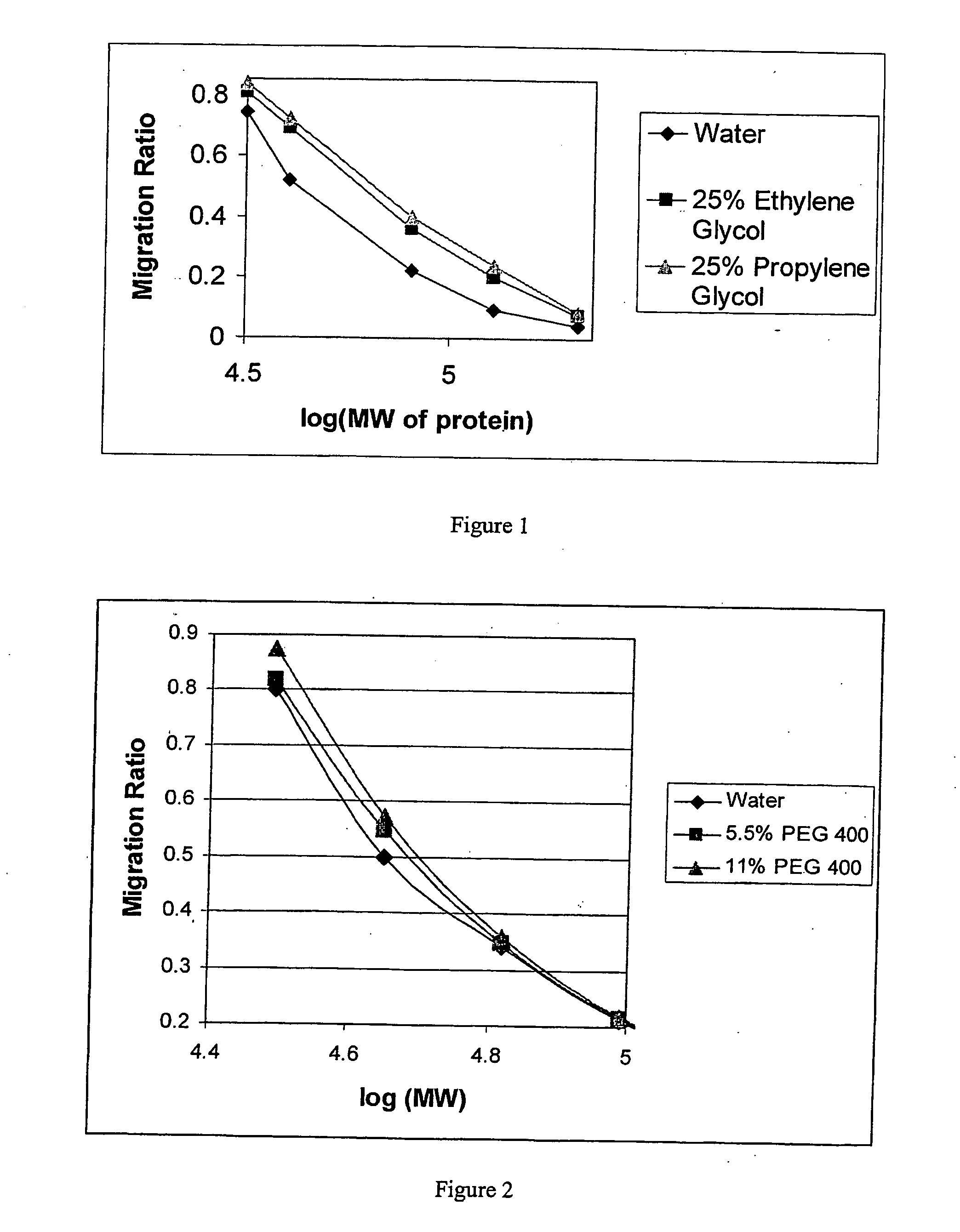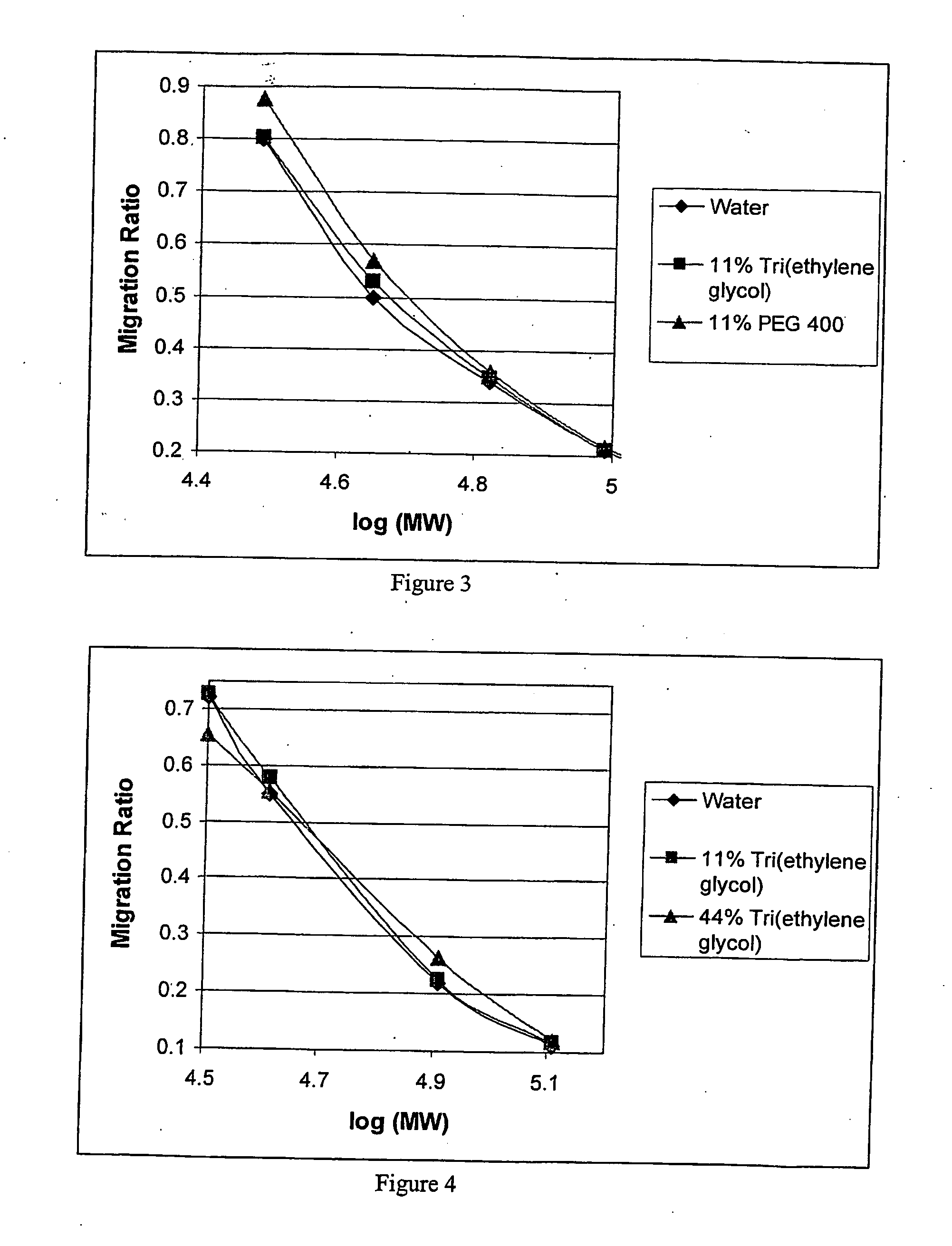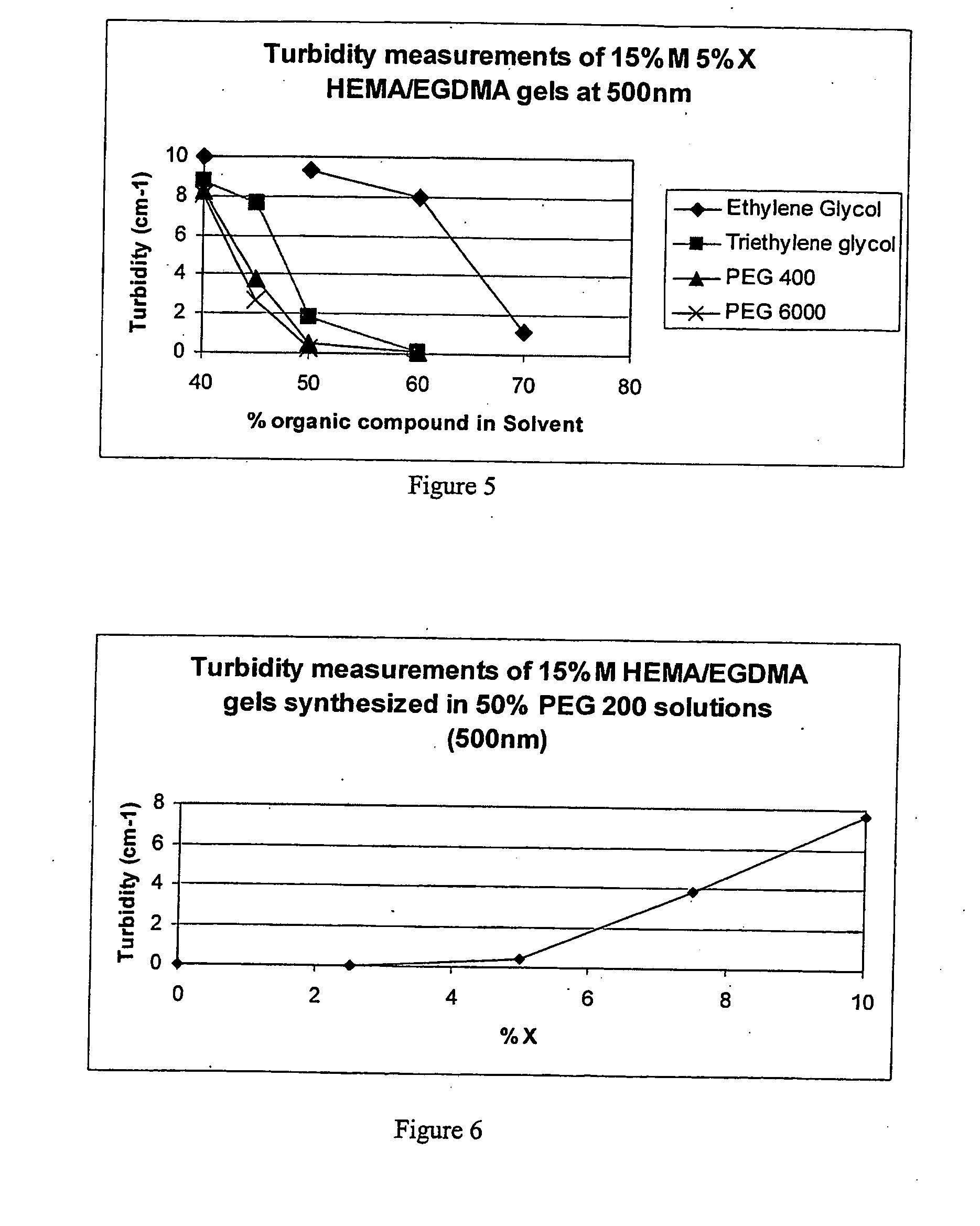Hydrogel preparation and process of manufacture thereof
- Summary
- Abstract
- Description
- Claims
- Application Information
AI Technical Summary
Benefits of technology
Problems solved by technology
Method used
Image
Examples
example 1
Preparation of Monomer Solutions
[0151] Two terms are introduced to classify the monomer solutions:
[0152] %M refers to the total concentration of monomer as a weight percentage; %X refers to the number of double bonds on the crosslinkers as a portion of the total number of double bonds on the monomers. % M=total mass of monomers (g)mass of reaction mixture (g)×100% X=number of double bonds on crosslinkers (mol)total numbers of double bonds on monomers (mol)×100
Preparation of Acrylamide Hydrogels
example 2
Preparation of 10%M 2%X AAm / BIS hydrogels for swelling tests using water as solvent
[0153] Monomer solutions (10 g) were prepared by dissolving AAm (978.3 mg) and BIS (21.7 mg) in water (9 g) in disposable glass vials. The monomer solution was then degassed by argon purging for 5 min prior to the addition of the initiator system (0.2 mol % initiator per double bond) composed of freshly made up 10% (w / v) APS and 10% (v / v) TEMED. The polymerization was then allowed to proceed at room temperature overnight under an argon environment.
example 3
Preparation of 10%M 2%X AAm / BIS hydrogels for swelling tests using aqueous ethylene glycol as solvent
[0154] Aqueous solutions of ethylene glycol (25, 50 and 75%) were prepared by varying amounts of ethylene glycol and water. AAm (978.3 mg) and BIS (21.7 mg) were added to the above solutions (9 g) in disposable glass vials. The monomer solution was then degassed by argon purging for 5 min prior to the addition of the initiator system (0.2 mol % initiator per double bond) composed of freshly made up 10% (w / v) APS and 10% (v / v) TEMED. The polymerization was then allowed to proceed at room temperature overnight under an argon environment.
PUM
| Property | Measurement | Unit |
|---|---|---|
| Fraction | aaaaa | aaaaa |
| Fraction | aaaaa | aaaaa |
| Fraction | aaaaa | aaaaa |
Abstract
Description
Claims
Application Information
 Login to View More
Login to View More - Generate Ideas
- Intellectual Property
- Life Sciences
- Materials
- Tech Scout
- Unparalleled Data Quality
- Higher Quality Content
- 60% Fewer Hallucinations
Browse by: Latest US Patents, China's latest patents, Technical Efficacy Thesaurus, Application Domain, Technology Topic, Popular Technical Reports.
© 2025 PatSnap. All rights reserved.Legal|Privacy policy|Modern Slavery Act Transparency Statement|Sitemap|About US| Contact US: help@patsnap.com



